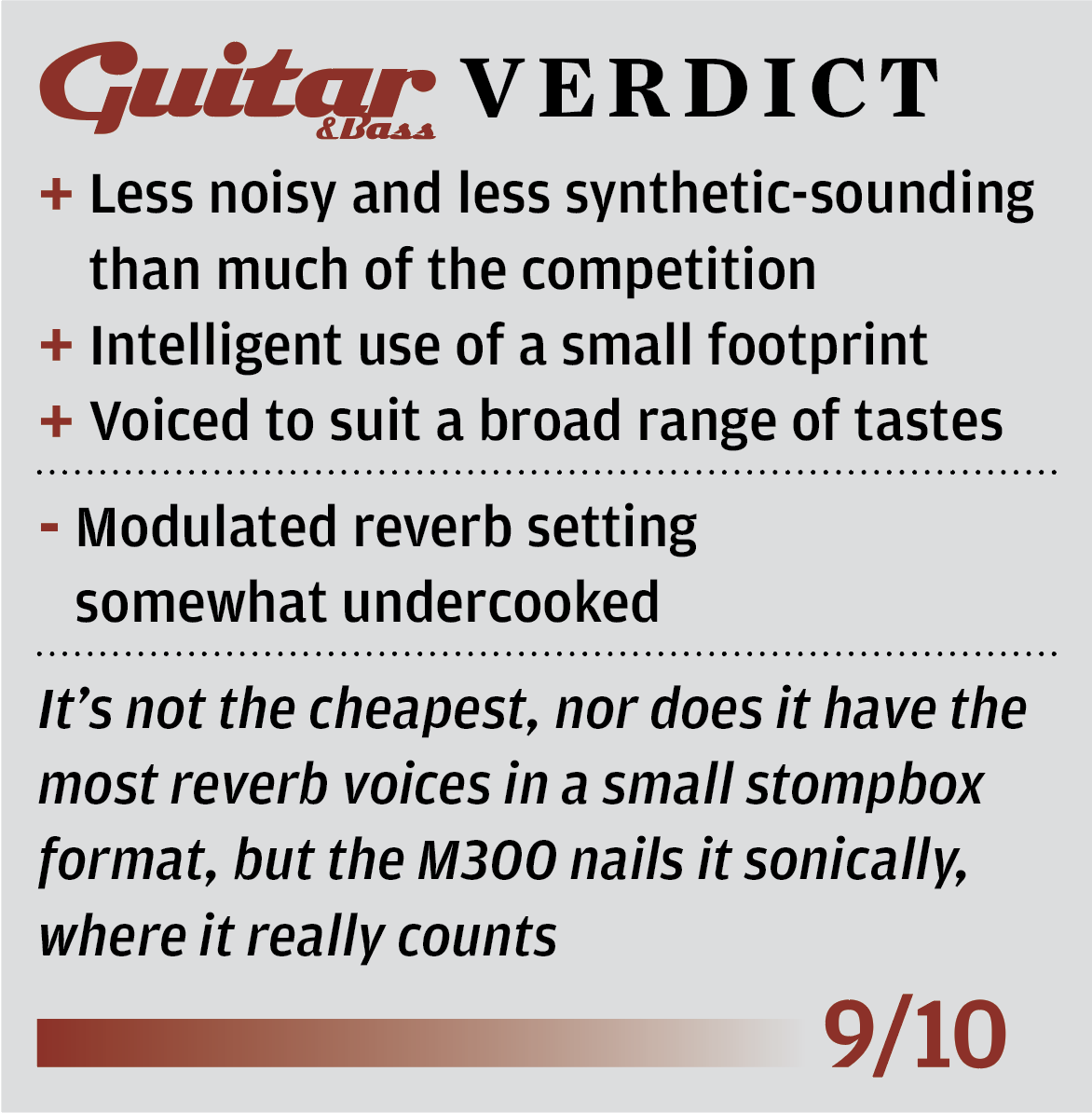MXR M300 Reverb Review
It’s taken MXR a while to bring a reverb pedal to market. Chris Vinnicombe finds out if it was worth the wait…

MXR’s M300 Reverb was one of our highlights of this year’s Winter NAMM in January thanks to the sheer amount of sounds and functionality it packs into a compact enclosure. Despite its simple, three-knob configuration, there’s plenty going on under the hood. Pressing the tone knob allows you to cycle through six digital reverb algorithms, from plate, spring and room emulations to the more esoteric mod, epic and pad modes.
In addition to giving us control over the decay and dry/wet mix, the M300 features an expression pedal input for hands-free sweeps between two settings (within one reverb style at a time only, expression pedal not included), while setting the internal stereo/mono switch to stereo and hooking up the pedal with TRS cables facilitates the unit’s stereo in/out capability. To access even more features, put the pedal in startup mode by disconnecting the power supply (battery power isn’t an option), setting the decay and mix controls to noon and pushing and holding down the tone knob while reconnecting the power source. You can then switch from the default true-bypass mode to a buffered bypass that allows trails to decay naturally when the effect is switched off. The wet mode can also be accessed should you want to send only the wet signal to your amp.
MXR M300 Reverb in use
Although all reverb effects, digital or analogue, tend to add a little hiss, we’re impressed by the M300’s low noise floor. It’s quieter than the other digital units we used for comparison and slightly less hissy than the spring reverb tank in our valve combo, so that’s a really good start. Switching reverb styles is easy, and it doesn’t take long to get used to the colour-coded system of three LEDs that light up green or red depending on which voice is selected.
Most guitarists who love reverb fall into either the vintage or ambient camp, and both are well catered for here. The plate, spring and room modes have a convincing depth and sense of physical space, and record very well. Darker tone settings yield impressively authentic, retro-flavoured results.
While we’ve yet to hear a digital spring reverb emulation that fully captures the splashy white-knuckle ride of the real thing, we were able to dial in the M300 so it sounded close enough for most applications. On the ambient side of things, the epic (multiple, interconnected, modulated delays) and pad (octave up and down synth sounds with reverb) modes are post-rock in a can, particularly when used with an expression pedal, allowing you to create huge swells by sweeping from subtle colouration to widescreen soundscapes. Your guitar’s volume control – or a volume pedal – is your friend here, too. Fans of Oceansize or Explosions In The Sky will be right at home.
Although we’re not totally sold on the order in which the effects are presented – a system based on the smallest to largest ‘space’ would make more sense than this rather arbitrary sequence – there’s very little to complain about. The mod setting (modulated studio-style plate reverb) is a little uninspiring and we’d rather have seen, say, a hall reverb included, but this is a great, convenient and inspiring stomp box.

Key Features
MXR M300 Reverb
• PRICE £187
• DESCRIPTION Six-voice digital reverb pedal with mono or stereo operation, true or buffered bypass, analogue dry path
• CONTROLS Decay, tone, mix. Tone control doubles as reverb style selector cycling through plate, spring, epic, mod, room and pad modes
• CONNECTIONS Instrument in/out, expression pedal input
• CONTACT Westside Distribution 0844 326 2000 www.jimdunlop.com

